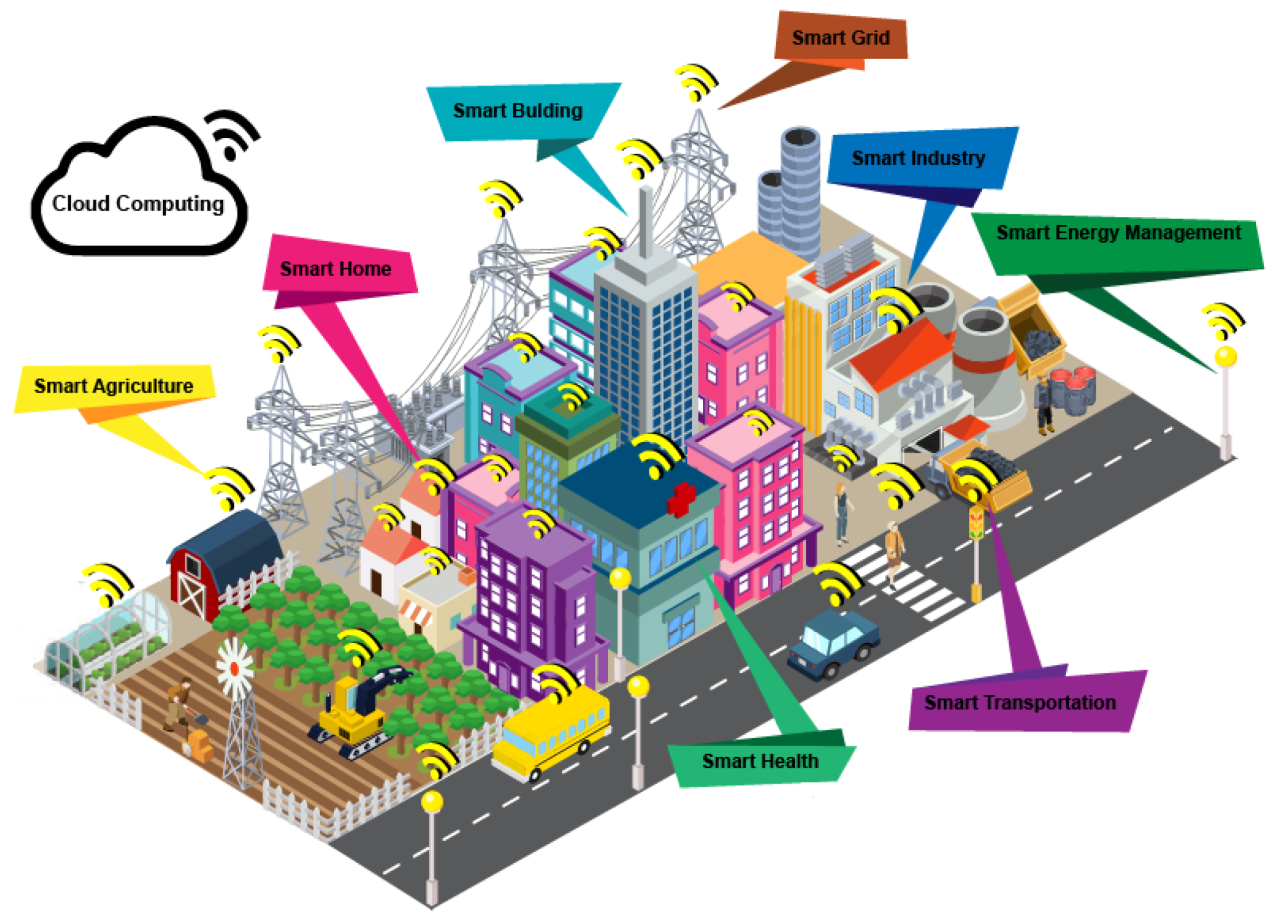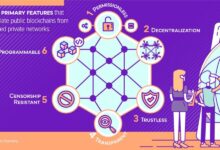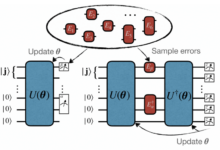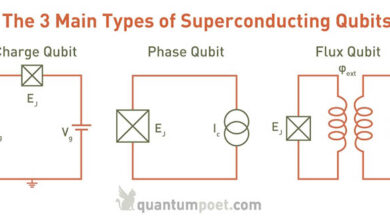5G-Powered Smart Cities A Connected Future
5G-powered smart cities represent a transformative leap forward in urban development. Imagine a city where traffic flows seamlessly, emergency services respond instantly, and environmental monitoring is proactive and precise – all powered by the lightning-fast speed and low latency of 5G networks. This technology isn’t just about faster internet; it’s about creating more efficient, sustainable, and responsive urban environments that improve the quality of life for all residents.
The integration of 5G allows for the interconnectedness of various smart city initiatives, from intelligent transportation systems and environmental sensors to enhanced public safety measures and improved healthcare services. This interconnectedness fosters data-driven decision-making, enabling city officials to optimize resource allocation, predict potential problems, and implement solutions more effectively. The potential benefits are vast, ranging from economic growth to improved public health and safety.
Infrastructure Development in 5G-Powered Smart Cities
Building a truly smart city powered by 5G requires a significant investment in robust and reliable infrastructure. This goes beyond simply installing 5G cell towers; it necessitates a holistic approach encompassing various interconnected systems designed to support the demands of a high-bandwidth, low-latency network. The successful implementation of this infrastructure is crucial for realizing the full potential of smart city initiatives.
Essential Infrastructure Components for 5G Smart Cities
The foundation of a 5G-powered smart city rests on several key infrastructure components working in harmony. Their effective integration determines the city’s ability to handle the massive data flow and connectivity needs of its citizens and services.
| Component | Description | Benefits | Challenges |
|---|---|---|---|
| 5G Cell Towers & Base Stations | The physical infrastructure transmitting and receiving 5G signals. These often require strategic placement for optimal coverage. | Provides high-speed, low-latency connectivity across the city. Enables widespread deployment of IoT devices. | High initial investment costs. Finding suitable locations, particularly in densely populated areas, can be difficult. Obtaining necessary permits and approvals can be time-consuming. |
| Fiber Optic Networks | High-bandwidth cables carrying data between cell towers, data centers, and other network elements. | Provides the backbone for high-capacity data transmission, essential for supporting the demands of a 5G network. Enables faster data speeds and greater network reliability. | High initial cost of deployment. Requires significant infrastructure upgrades in existing networks. Difficult to deploy in certain geographical areas. |
| Small Cells | Smaller, low-power base stations deployed to extend 5G coverage in dense urban areas and improve signal strength. | Improves network capacity and coverage, particularly in areas with high building density or signal obstructions. Reduces reliance on macrocell towers. | Requires a large number of deployments, increasing overall costs. Managing and maintaining a large number of small cells can be complex. Requires careful site selection to avoid interference. |
| Edge Computing | Processing data closer to the source (e.g., on the edge of the network) rather than relying solely on centralized data centers. | Reduces latency, improves responsiveness of applications, and enhances data security. Enables real-time processing of data from IoT devices. | Requires significant investment in edge computing infrastructure. Ensuring data security and privacy across distributed edge locations is crucial. |
| Data Centers | Facilities housing servers and network equipment, responsible for storing and processing large amounts of data. | Provides the necessary computing power to support the demands of a 5G network and various smart city applications. Enables data storage and analysis. | Requires significant investment in infrastructure and energy. Ensuring sufficient cooling and power supply is crucial. Security and disaster recovery planning are vital. |
Challenges of Deploying 5G Infrastructure in Diverse Urban Environments
Deploying 5G infrastructure in cities presents unique challenges. High building density often leads to signal blockage and attenuation, requiring denser deployments of small cells and careful frequency planning to mitigate interference. Geographical limitations, such as narrow streets, historical buildings, and underground infrastructure, can complicate installation and maintenance. Negotiating access rights with building owners and navigating complex regulatory environments also add significant hurdles.
For example, deploying fiber optic cables in older cities with established underground utilities can be extremely complex and expensive. Similarly, securing suitable locations for cell towers in densely packed urban centers often faces significant community opposition and regulatory hurdles.
The Role of Fiber Optics and Small Cells in Enhancing 5G Network Coverage and Capacity
Fiber optic cables form the crucial backbone of 5G networks, providing the high-bandwidth capacity needed to transmit massive amounts of data generated by smart city applications. Their use is essential for connecting 5G base stations and data centers, ensuring fast and reliable communication. Small cells, on the other hand, play a vital role in extending 5G coverage to areas with poor signal penetration, such as densely populated urban areas and indoor spaces.
5G-powered smart cities rely heavily on advanced data processing and AI for efficient resource management. However, the true potential of these cities hinges on breakthroughs in AI, which brings us to a crucial point: understanding the limitations currently hindering progress, as explored in this article: Exploring the limitations and challenges of current quantum AI algorithms. Overcoming these challenges will unlock a new level of sophistication and optimization within these interconnected urban environments.
By strategically deploying small cells, network operators can significantly improve network capacity and provide better connectivity to users and devices. The combination of fiber optics and small cells offers a powerful solution to overcome the challenges of providing comprehensive 5G coverage and capacity in complex urban environments. For instance, cities like Seoul, South Korea, have invested heavily in fiber optic infrastructure to support their advanced 5G networks, while also deploying a large number of small cells to ensure widespread coverage.
Applications of 5G in Smart City Services: 5G-powered Smart Cities

Source: mdpi.com
5G-powered smart cities are revolutionizing urban life, impacting everything from traffic management to public safety. This connectivity also fuels advancements in other fields; for instance, the massive data processing needed for breakthroughs like those detailed in this article on Quantum AI applications in drug discovery and development relies heavily on robust, high-speed networks. Ultimately, the success of these advanced technologies is intertwined with the infrastructure of smart cities.
G’s high speed, low latency, and massive connectivity capabilities are transforming how smart cities operate, improving efficiency and enhancing the quality of life for residents. This section explores specific examples of how 5G technology is being implemented across various smart city services.
5G’s Impact on Public Transportation Efficiency and Safety, 5G-powered smart cities
The speed and reliability of 5G are revolutionizing public transportation, leading to improved efficiency and enhanced passenger safety. Real-time data transmission allows for better traffic management, optimized routing, and enhanced security measures.
- Predictive Maintenance of Public Vehicles: 5G enables the continuous monitoring of vehicle components, allowing for predictive maintenance and reducing unexpected breakdowns. Sensors embedded in buses and trains transmit data on engine performance, tire pressure, and other critical parameters to a central control system. This proactive approach minimizes service disruptions and improves overall reliability.
- Real-time Traffic Management and Optimization: 5G’s low latency allows for real-time data collection from various sources, including traffic cameras, GPS trackers on vehicles, and smart sensors embedded in roadways. This data is used to optimize traffic flow, reduce congestion, and improve travel times. For instance, intelligent traffic lights can adapt to real-time conditions, prioritizing emergency vehicles or adjusting timings based on traffic density.
- Enhanced Passenger Information Systems: 5G enables the deployment of accurate and up-to-the-minute passenger information systems. Real-time updates on arrival times, delays, and route changes are displayed on digital screens at stations and transmitted directly to passengers’ smartphones through dedicated apps. This improved information flow reduces passenger anxiety and improves overall satisfaction.
- Improved Security and Surveillance: High-definition cameras connected via 5G can provide enhanced security within public transportation systems. Real-time video feeds can be monitored remotely, enabling rapid response to incidents and deterring crime. Facial recognition technology, combined with 5G’s speed, can aid in identifying suspects or individuals of interest.
- Autonomous Vehicle Integration: 5G’s low latency is crucial for the safe operation of autonomous vehicles in public transportation. The reliable communication between autonomous vehicles and the central control system is essential for coordination, navigation, and collision avoidance. This technology holds the potential for improved efficiency and reduced accidents in the future.
5G-Enabled Advanced Environmental Monitoring and Resource Management
- G’s ability to handle massive amounts of data from numerous connected devices is transforming environmental monitoring and resource management. This allows for more accurate predictions, better decision-making, and a more sustainable approach to city management.
- G networks support the deployment of a vast array of sensors across the city to monitor air and water quality, noise levels, and energy consumption. This data, transmitted in real-time, enables city officials to identify pollution hotspots, manage water resources effectively, and optimize energy consumption. For example, smart grids leveraging 5G can dynamically adjust energy distribution based on real-time demand, reducing waste and improving efficiency.
Furthermore, the deployment of smart irrigation systems using 5G-connected sensors can optimize water usage in parks and green spaces, conserving valuable resources.
5G’s Enhancement of Public Safety and Emergency Response
G’s low latency and high bandwidth significantly improve the speed and effectiveness of emergency response systems. Faster communication between first responders, dispatch centers, and citizens leads to quicker response times and potentially saves lives.
| Scenario | Response Time without 5G (Estimate) | Response Time with 5G (Estimate) |
|---|---|---|
| Emergency call dispatch to first responders | 3-5 minutes | <1 minute |
| Real-time video transmission from the scene | Several minutes (depending on network congestion) | Near instantaneous |
| Data sharing between emergency services | Minutes to hours | Seconds to minutes |
Economic and Social Impacts of 5G Smart Cities
The implementation of 5G infrastructure in smart cities presents a complex interplay of economic and social consequences. While promising significant advancements, it also introduces challenges that require careful consideration and proactive mitigation strategies. Understanding these impacts is crucial for ensuring equitable and sustainable urban development.
Economic Benefits and Drawbacks of 5G Infrastructure
The economic landscape of a city is significantly altered by the introduction of 5G technology. While the potential for growth is substantial, so too are the potential costs and risks.
- Increased Economic Activity: 5G’s high speed and low latency facilitate the development of new industries and services, boosting economic growth through innovation and job creation in sectors like IoT, AI, and data analytics. For example, the expansion of smart manufacturing, enabled by real-time data analysis and automation, can significantly increase productivity and efficiency.
- Attracting Investment: Cities with robust 5G infrastructure are more attractive to businesses and investors, leading to increased foreign direct investment (FDI) and economic development. This can be seen in cities like Seoul, South Korea, which have invested heavily in 5G to attract tech companies and startups.
- Improved Efficiency and Productivity: 5G-enabled smart city services, such as optimized traffic management and smart grids, lead to improved resource allocation and reduced operational costs for businesses and the city government. For instance, intelligent traffic systems can reduce congestion, leading to lower fuel consumption and reduced commute times.
- High Initial Investment Costs: Deploying 5G infrastructure requires significant upfront investment in network equipment, installation, and maintenance. This can place a considerable financial burden on city budgets, potentially hindering other essential public services.
- Digital Divide Exacerbation: Unequal access to 5G technology can exacerbate existing economic inequalities, leaving certain communities behind and widening the gap between the rich and the poor. This requires targeted initiatives to ensure equitable access.
- Job Displacement Concerns: Automation driven by 5G-enabled technologies could lead to job displacement in some sectors, requiring retraining and upskilling programs to mitigate the negative impacts on the workforce.
Impact of 5G on Employment and Job Creation
The introduction of 5G technology in smart cities is expected to have a transformative effect on employment, creating new opportunities while potentially displacing others.The initial rollout and maintenance of 5G infrastructure itself create numerous jobs in engineering, construction, and telecommunications. Furthermore, the development and deployment of 5G-enabled applications across various sectors will generate substantial employment in areas such as software development, data analysis, and cybersecurity.
However, the automation potential of 5G-powered systems could lead to job losses in sectors heavily reliant on manual labor, requiring proactive measures for workforce retraining and adaptation. For example, autonomous vehicles, enabled by 5G connectivity, could significantly impact the trucking and transportation industries. Successful integration requires strategic planning to balance job creation and displacement.
Social Equity Implications of 5G Deployment
The deployment of 5G technology presents both opportunities and challenges concerning social equity. Addressing the digital divide and ensuring equitable access to the benefits of 5G is paramount.Unequal access to 5G technology can further marginalize already disadvantaged communities, creating a digital divide that limits access to education, healthcare, employment opportunities, and essential services. This necessitates strategies to bridge the gap, such as targeted investment in underserved areas, affordable internet access programs, and digital literacy initiatives.
For instance, providing subsidized 5G access to low-income households or establishing community Wi-Fi hotspots in underserved neighborhoods can help ensure equitable access to the technology and its benefits. Furthermore, ensuring digital literacy programs are available and accessible to all members of society is crucial to ensure that everyone can benefit from 5G-powered services.
Security and Privacy Concerns in 5G Smart Cities
The proliferation of interconnected devices and data streams in 5G-powered smart cities presents significant security and privacy challenges. The sheer volume of data generated, combined with the increased reliance on network connectivity, creates a larger attack surface and necessitates robust security measures to protect citizens’ data and the city’s critical infrastructure. This section explores the key concerns and proposes a framework for mitigating these risks.
The integration of various technologies, including IoT devices, AI, and cloud computing, within the smart city ecosystem introduces complex security vulnerabilities. Effective security measures must consider the unique characteristics of 5G networks and the diverse range of applications they support.
A Security Framework for 5G Smart Cities
A comprehensive security framework is crucial for protecting data privacy and security. This framework should be multi-layered and address various aspects of the smart city infrastructure. The framework’s effectiveness relies on proactive measures, robust incident response, and continuous monitoring and adaptation.
- Data Encryption: Employing strong encryption protocols (e.g., AES-256) for all data transmitted and stored within the 5G network and associated applications. This protects data from unauthorized access even if intercepted.
- Access Control and Authentication: Implementing robust authentication mechanisms (e.g., multi-factor authentication) and granular access control policies to restrict access to sensitive data and systems based on user roles and privileges. This minimizes the impact of compromised credentials.
- Network Security: Implementing advanced network security measures such as firewalls, intrusion detection/prevention systems (IDS/IPS), and virtual private networks (VPNs) to protect the 5G network infrastructure from external threats. This creates multiple layers of defense against attacks.
- Data Anonymization and Pseudonymization: Employing data anonymization and pseudonymization techniques to protect the identity of individuals while still allowing for data analysis and insights. This balances the need for data utility with privacy protection.
- Regular Security Audits and Penetration Testing: Conducting regular security audits and penetration testing to identify vulnerabilities and weaknesses in the system. This proactive approach helps to identify and address potential threats before they can be exploited.
- Incident Response Plan: Developing and regularly testing a comprehensive incident response plan to effectively manage and mitigate security incidents. This ensures a swift and coordinated response to security breaches.
- Secure Software Development Lifecycle (SDLC): Implementing a secure SDLC to ensure that security is built into all software and applications from the design phase. This reduces vulnerabilities from the outset.
- Compliance with Data Privacy Regulations: Adhering to relevant data privacy regulations (e.g., GDPR, CCPA) to ensure the lawful and ethical processing of personal data. This demonstrates commitment to data protection and minimizes legal risks.
Potential Cyber Threats and Vulnerabilities
The interconnected nature of 5G smart cities creates numerous potential entry points for cyberattacks. These vulnerabilities can compromise sensitive data, disrupt essential services, and even endanger public safety.
Examples include distributed denial-of-service (DDoS) attacks overwhelming network resources, malware infecting IoT devices, and sophisticated phishing campaigns targeting city employees. The increased reliance on AI and machine learning algorithms also introduces the risk of adversarial attacks that manipulate these systems.
- IoT Device Vulnerabilities: The vast number of IoT devices in a smart city presents a significant attack surface. Many IoT devices lack robust security features, making them vulnerable to hacking and malware infection.
- Network Attacks: 5G networks themselves can be targeted by various attacks, including DDoS attacks, man-in-the-middle attacks, and SIM swapping attacks.
- Data Breaches: The vast amount of data collected in a smart city makes it a prime target for data breaches. Sensitive personal data, infrastructure control data, and financial information are all at risk.
- Insider Threats: Malicious or negligent insiders can pose a significant threat to smart city security. This includes employees, contractors, and other individuals with access to sensitive systems.
Comparison of Cybersecurity Solutions
Various cybersecurity solutions can be implemented to protect 5G smart city infrastructure. The choice of solution depends on factors like budget, complexity, and specific needs.
| Cybersecurity Solution | Description | Strengths | Weaknesses |
|---|---|---|---|
| Intrusion Detection/Prevention Systems (IDS/IPS) | Monitors network traffic for malicious activity and takes action to prevent or mitigate threats. | Real-time threat detection, automated response | Can generate false positives, requires skilled personnel for management |
| Firewall | Controls network traffic based on predefined rules, preventing unauthorized access. | Cost-effective, easy to implement | Can be bypassed by sophisticated attacks, requires regular updates |
| Endpoint Detection and Response (EDR) | Monitors individual devices for malicious activity and provides incident response capabilities. | Provides granular visibility into device activity, improves incident response | Can be resource-intensive, requires integration with other security tools |
| Security Information and Event Management (SIEM) | Collects and analyzes security logs from various sources to identify and respond to security incidents. | Provides centralized security monitoring, improves threat detection | Can be complex to implement and manage, requires significant storage capacity |
| Blockchain Technology | Provides a secure and transparent way to manage data and transactions. | Enhanced data security, immutability | Scalability challenges, complexity of implementation |
Future Trends and Technological Advancements
The integration of 5G into smart cities is still in its early stages, yet its potential for transformation is immense. Looking ahead, significant technological advancements and evolving trends will shape the future of 5G-powered smart cities, leading to even more efficient, sustainable, and resilient urban environments. This section explores the projected evolution of 5G technology and its integration into smart city initiatives over the next decade, the increasing role of AI and ML, and the potential impact of 6G and beyond.
The next decade will witness a rapid evolution in 5G technology and its applications within smart cities. This evolution won’t be a linear progression, but rather a series of interconnected developments building upon each other.
5G-powered smart cities are generating massive datasets, creating opportunities for advanced analytics. Understanding these complex data flows requires powerful tools, and this is where advancements like quantum AI come into play; check out this article on How quantum AI will revolutionize financial modeling and prediction to see how it could impact resource allocation in smart city infrastructure.
Ultimately, these technological leaps will help optimize resource management within 5G smart cities.
Projected Evolution of 5G and its Integration into Smart Cities
The following timeline illustrates key milestones in the projected evolution of 5G technology and its integration into smart city initiatives over the next decade. This timeline is based on current technological advancements and industry projections, acknowledging that unforeseen breakthroughs could accelerate or alter this trajectory.
| Year | Key Development | Smart City Impact |
|---|---|---|
| 2024-2025 | Widespread 5G deployment in major cities; improved network capacity and coverage. | Enhanced connectivity for IoT devices, improved real-time data analytics for traffic management and public safety. |
| 2026-2027 | Emergence of 5G-Advanced (5G-A) with higher speeds and lower latency. | Support for more demanding applications like autonomous vehicles and advanced telemedicine. Increased efficiency in smart grids. |
| 2028-2029 | Integration of edge computing with 5G networks. | Reduced latency for real-time applications, improved data processing capabilities for AI and ML algorithms. Enhanced responsiveness in emergency services. |
| 2030-2035 | Development of 5G private networks tailored for specific smart city applications. | Improved security and reliability for critical infrastructure, enhanced data control and management for city authorities. |
The Role of AI and Machine Learning in Enhancing 5G-Powered Smart City Services
AI and ML are crucial components in maximizing the potential of 5G networks within smart cities. These technologies allow for the analysis of massive datasets generated by connected devices, leading to more efficient and effective city services.
For example, AI-powered traffic management systems can analyze real-time traffic data from connected vehicles and cameras to optimize traffic flow, reducing congestion and improving commute times. Similarly, ML algorithms can predict potential infrastructure failures by analyzing sensor data from smart grids, enabling proactive maintenance and preventing outages. Predictive policing, using AI to analyze crime patterns and allocate resources effectively, is another example of the transformative potential of AI and ML in 5G-powered smart cities.
The Potential of 6G and Beyond in Revolutionizing Smart City Technologies
While 5G is still in its early stages of deployment, research and development into 6G and beyond are already underway. These next-generation technologies promise even greater advancements in speed, capacity, and latency, opening up new possibilities for smart city applications.
6G and beyond are expected to offer significantly improved network speeds, ultra-low latency, and enhanced security, enabling the development of entirely new smart city applications, including advanced holographic communication, ubiquitous sensing, and truly immersive virtual and augmented reality experiences. The increased bandwidth will support the seamless integration of an exponentially larger number of connected devices.
Case Studies of 5G Smart Cities
The implementation of 5G technology is rapidly transforming urban landscapes globally, creating what are known as 5G smart cities. These cities leverage the high speed and low latency of 5G networks to improve various aspects of city life, from transportation and public safety to environmental monitoring and citizen services. Examining specific examples reveals the diverse approaches and significant impacts of this technological advancement.
5G-powered smart cities rely on massive data processing for efficient resource management and optimized services. This necessitates advancements in computing power, leading us to consider the exciting, yet challenging, field of Quantum AI hardware development and its challenges in scalability. Overcoming these scalability hurdles is crucial for future smart city infrastructure, unlocking the potential for even more sophisticated and responsive urban environments.
Seoul, South Korea: A Pioneer in 5G Smart City Development
Seoul has been at the forefront of 5G smart city initiatives. Its strategy focuses on integrating 5G with existing smart city infrastructure to enhance existing services and create new ones. A key element is the deployment of a vast network of 5G-enabled sensors and devices across the city. These sensors monitor various aspects of the urban environment, including traffic flow, air quality, and pedestrian movement.
This data is then analyzed to optimize traffic management, improve public safety, and enhance resource allocation. For example, real-time traffic data allows for dynamic adjustments to traffic light timings, reducing congestion and improving commute times. Furthermore, the city uses 5G to power its smart surveillance systems, enabling quicker response times to emergencies. The integration of 5G with other technologies, such as AI and IoT, is a hallmark of Seoul’s approach.
Barcelona, Spain: Focusing on Citizen Engagement and Sustainability
Barcelona’s 5G smart city strategy emphasizes citizen engagement and sustainability. The city utilizes 5G to enhance its existing smart city platform, connecting various services and fostering better communication between the city government and its residents. A notable example is the use of 5G-enabled smart streetlights, which not only provide improved illumination but also collect data on environmental factors such as noise and air pollution.
This data is then used to inform environmental policies and improve the overall quality of life. Furthermore, Barcelona is leveraging 5G to improve public transportation, using real-time data to optimize bus routes and improve the efficiency of the city’s transportation system. Their focus on sustainability is evident in their efforts to use 5G to monitor energy consumption and optimize resource management.
Tallinn, Estonia: Leveraging 5G for Digital Governance and Citizen Services
Tallinn, Estonia, showcases a different approach, prioritizing digital governance and streamlined citizen services. Their strategy centers around creating a fully digitalized city environment where 5G plays a crucial role in connecting various government services and enabling seamless interactions with citizens. This includes online access to government services, digital identity solutions, and smart parking systems. The city uses 5G to improve data transmission speeds, allowing for faster and more efficient processing of citizen requests and information.
The emphasis on digital governance is complemented by efforts to improve public safety and security using 5G-enabled surveillance systems and emergency response mechanisms. Tallinn’s approach highlights the potential of 5G to transform how citizens interact with their government and access essential services.
Comparison of 5G Smart City Approaches
| City | Primary Focus | Key Implementations | Challenges Addressed |
|---|---|---|---|
| Seoul | Infrastructure Enhancement & Data-Driven Optimization | 5G-enabled sensors, smart surveillance, traffic management | Traffic congestion, public safety, resource allocation |
| Barcelona | Citizen Engagement & Sustainability | Smart streetlights, public transportation optimization, environmental monitoring | Environmental pollution, inefficient transportation, citizen communication |
| Tallinn | Digital Governance & Citizen Services | Online government services, digital identity, smart parking | Inefficient bureaucracy, lack of citizen access to services, public safety |
Epilogue
The journey towards fully realized 5G-powered smart cities is an ongoing process, but the potential benefits are undeniable. From streamlined public services and enhanced safety to economic growth and environmental sustainability, the transformative power of 5G is reshaping how we live, work, and interact within urban environments. Addressing the challenges related to infrastructure deployment, data security, and digital equity will be crucial in ensuring that the benefits of this technology are shared equitably and responsibly, creating truly smart and inclusive cities for the future.
FAQ Compilation
What are the main privacy concerns with 5G in smart cities?
The vast amount of data collected by 5G-enabled devices and sensors raises concerns about data breaches and misuse of personal information. Robust data encryption, anonymization techniques, and transparent data governance policies are essential to mitigate these risks.
How does 5G improve public transportation?
5G enables real-time traffic monitoring, predictive maintenance of public transport vehicles, optimized routing, and improved communication between passengers and transit authorities, leading to more efficient and reliable services.
What is the cost of implementing 5G infrastructure in a city?
The cost varies significantly depending on the city’s size, existing infrastructure, and the scope of the 5G deployment. It involves substantial investments in network equipment, installation, and ongoing maintenance.
Will 5G create new jobs?
Yes, the implementation and maintenance of 5G networks, along with the development and deployment of 5G-powered applications and services, are expected to create numerous jobs in various sectors, including telecommunications, technology, and engineering.
How does 5G help with environmental monitoring?
5G’s high bandwidth and low latency allow for the deployment of numerous sensors across a city to monitor air and water quality, noise levels, and other environmental factors in real-time, enabling proactive environmental management.









